Last Updated on November 1, 2023 by Steve Hogg
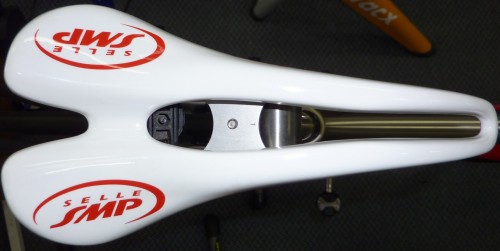
I’ve been promising this post for a while now, so it’s about time. From a bike fitting perspective, I’m a fan of SMP seats. As a brand they are my most common pick for comfort, performance and client problem solving. This post will tackle the why’s and wherefore’s of SMP’s, at least as I see them, and will also attempt to give you enough information to enable you to make an informed choice if you’re in the market for an SMP.
Firstly, a discussion about seat widths versus pelvis widths. Many years ago, when I didn’t know much about pelvic anatomy, I naively assumed that there had to be link between ‘sitbone’ separation width and seat width. To that end I used to sprinkle talcum powder on a flat wooden seat and then have customers carefully lower their backsides onto the seat in their undies, and then gently stand up again, leaving what amounted to a pressure map in the talcum powder. I then tried to correlate measurements I took from that talcum powder impression with seat widths. What came out of that exercise is that there is no clear correlation between sitbone separation width and the width of a comfortable seat for that person. There is a sort of / kind of /more or less correlation around 75% of the time, with the remaining 25% being at odds with my original assumption. Sometimes wildly at odds. Being curious I was motivated to find out why and the answer lies in the shape of the human pelvis as well as the multiplicity of seat shapes, lengths, widths, tumblehomes and so on.
I need to clear up a common misunderstanding. When people talk about ‘sitbones’ this is often taken as synonymous with the ischial tuberosities which it isn’t, and I’m as guilty of sloppy language like this as anyone. One of the things I like about writing about bike fitting is that it forces me to crystallise and tidy up my thinking, and the sitbone / ischial tuberosity conflation / confusion is an instance of this. Have a look at the pic below.
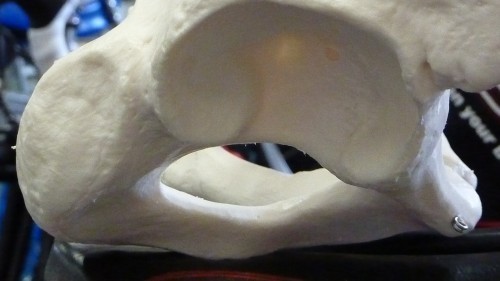 This is plastic copy of a human pelvis sitting on an SMP seat as viewed from the side. The large bony protusion at the rear is the ischial tuberosity. This is not what a cyclist sits on………….unless they ride a recumbent, or possibly a Harley. We sit on the bone at the base of the pelvis as you can see above. This is the ischiopubic ramus. You will see the slight downward protrusion approximately half way along the ischiopubic ramus. The area behind that is the inferior ischial ramus [which I’ll call IIR] and the area in front of that is the inferior pubic ramus [which I’ll call IPR]. We bear our weight on a bike on the the ischiopubic ramus and it is the relative loading of the IIR and IPR that plays a large part in comfort.
This is plastic copy of a human pelvis sitting on an SMP seat as viewed from the side. The large bony protusion at the rear is the ischial tuberosity. This is not what a cyclist sits on………….unless they ride a recumbent, or possibly a Harley. We sit on the bone at the base of the pelvis as you can see above. This is the ischiopubic ramus. You will see the slight downward protrusion approximately half way along the ischiopubic ramus. The area behind that is the inferior ischial ramus [which I’ll call IIR] and the area in front of that is the inferior pubic ramus [which I’ll call IPR]. We bear our weight on a bike on the the ischiopubic ramus and it is the relative loading of the IIR and IPR that plays a large part in comfort.
So why isn’t there a clear correlation between pelvis width and seat width?
The picture below is the same plastic pelvis sitting on an SMP seat as viewed from the rear. Looking closely at it gives us the major clue.
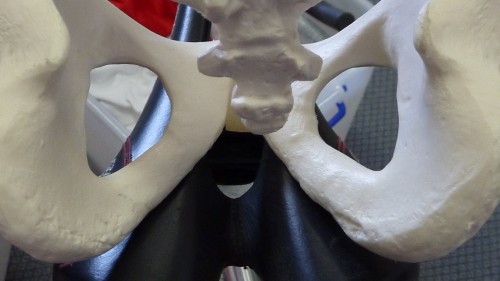
As you can see, the ischiopubic ramus narrows from rear to front. What that means is that maximum width of the pelvis is less important when it comes to determining seat width than which part of the ischiopubic ramus is bearing the majority of weight and what width the pelvis is at that point. And that will depend on the how far the pelvis is leaning forward. As the pelvis leans forward , weight is being borne less on the IIR and more on the IPR where the separation width of the left and right rami (plural of ramus) is narrower. Which means in turn that if you have a wide pelvis but are flexible enough to be able to roll your pelvis forward well and extend your back well, you may be able to comfortably use a narrower seat than would be expected. Conversely, a rider with a narrower pelvis who is inflexible and sits with a more upright position may need a wider seat than would be obvious at first glance. Naturally, there are any number of permutations of morphology, function and seat choice in between those extremes.
The chief area where SMP’s differ from other seats is the width and length of the centre cut out. If you have the ability to roll your pelvis forward on most other seats, you are jamming the soft tissue of the perineum and genitalia into the seat. With SMP’s, no problem, they’ve cut that part of the seat completely out.
The problem with this is that there is still no definitive way to say “this saddle is the best choice of the SMP range for this rider”. When I recommend a particular SMP to a rider it is usually on the basis of having observed how they function on a bike as well as their size and their global function off the bike. It is an educated guess, not a ‘fact’ and as such, I occasionally get it wrong. What I propose to do is pass on some observations gained during the successful, and occasionally unsuccessful experiences my fit clients have had with SMP’s.
So why SMP?
SMP push research linking pelvic shapes and compression issues as a major design criterion of their range. Amongst seat manufacturers, they aren’t alone in these claims but genuinely seem to have taken their thinking and the seat designs resulting from it further than others.
General Info
The list of SMP seats below is not the entire SMP range, just the dozen models that I stock or am familiar with. All share certain features.
1. None of them are flat as viewed from the side. All have a dip in the middle and and degree of dip varies from model to model. Basically, the greater the dip, the more the seat is designed for the rider to potentially rotate their pelvis forward and lower their torso. The rider doesn’t have to do this, but the potential to do it is there if the rider is functional enough to do it well.
2. All are designed to be ridden at a variety of angles from level to nose down, typically between negative 2 and 5 degrees, with the Avant, Pro and Glider being exceptions. This is measured between the high point on either side of the channel at the rear to the high point on either side before the nose droops down.
3. All have a full length centre cutout, though the width varies between models. The reason for the cutout is that as the rider rolls their pelvis forward and more heavily loads the IPR, there would be uncomfortable pressure on soft tissue and nerve compression without a good sized cutout. The design of SMP’s ensures that weight is borne on the IIR or IPR or a combination of both, not soft tissue.
4. All have a Concorde like drooping nose. My assumption has been that this is to avoid catching the underside of the riders knicks on the nose of the seat when dropping back onto the seat after an off the seat effort. I’ve seen this happen, in fact had it happen on other seats, but only when wearing ill fitting knicks that were too big or when the stitching in the centre of chamois was worn leaving loose material to be caught.
5. All the steel seat rail versions have a rail that is one piece, not the usual two separate seat rails. When a seat has a large chunk of the centre cut out of it, there is a reduction in the strength and rigidity of the seat shell. This is regained by having a rail design that is separate where each side of the rail plugs into the front of the seat, but one piece at the rear. An additional factor is the thermoplastic shells seem to be made from much more rigid material than most other brands. This probably indicates a high carbon content thermoplastic, though I don’t know that.
6. The one piece rail design of the steel railed versions, as well as the carbon railed versions of the seats with thermoplastic shells, means that the rails can be replaced in event of a failure. Failures aren’t common. I’ve seen a couple and it is far less expensive to replace a seat rail than a seat. All that is needed is to undo 2 groups of 4 self tapping allen screws that hold down the 2 cantle plates that secure the rails at the rear underside of the seat shell. (see pic)
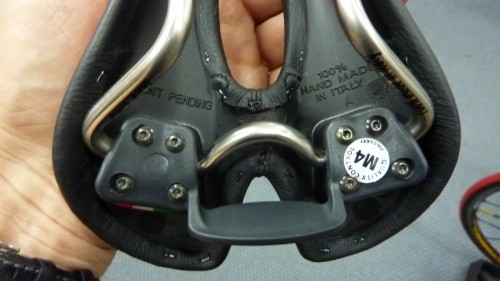
The carbon shelled models have steel or carbon rails that are bonded to the upper and so this isn’t possible.(see pic)
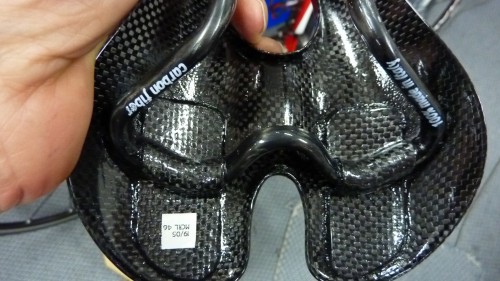
7. All have extraordinarily long rails. Most seats have a flat section of seat rail 70 – 75mm long. Some seats have limit markers on the rails with the seat post’s seat rail clamp not meant to be positioned outside of these limits. In some high end Selle Italia models, which are otherwise well designed seats, the limit markers are only 40mm apart. Given that Campagnolo, Thomson, 3T and many FSA seat post models (and others) have seat rail clamps that measure 40mm or more from front to rear, then seats like this have zero effective fore and aft adjustment. SMP’s are the opposite in that the flat section of the seat rails of there racing oriented seats are 95 – 100mm long. Additionally, the placement of the rail is such that it comes a long way towards the nose which means that the seat can be pushed back a long way if necessary.
8. The performance oriented SMP’s below; the Composit and Forma Families, as well as the Glider, have seat shoulders (widest point of the seat before it narrows as the nose projects forward) that are further back relative to the length of the seat than most other seats. This means that the rider sits further back relative to the length of the seat by some margin when compared to popular seats like Selle Italia SLR’s and Fizik’s Arione. In turn this means that many SMPs need 10 – 15mm less seat setback to maintain a given rider butt position in space than many other seats do. In terms of custom frame design, this often means that a frame designed for a performance SMP will need a seat tube angle that is 1 to 1.5 degrees steeper and a top tube length that is 10 – 15mm shorter to enable the rider to have the same position in space over the frame as they would on a more conventional seat. Unless there is enormous certainty on the part of the intending custom frame purchaser, I think it is smarter NOT to design a frame around a seat. Instead use a zero offset seat post on a custom frame with an SMP. That way if the rider decides to change to a more conventional seat brand / model at some future date, all they need to do is to use a standard offset seat post when they change seats.
9. The shape of the Composit and Forma Families means that when the rider rotates their pelvis forward when reaching down into the drops, the rise or kick up at the rear of the seat supports part of the gluteals that would not normally be supported on a flatter profiled, more conventional seat. That prevents the rider moving back on the seat just as the rise at the front end of the dip prevents the rider moving forward much on the seat in response to differing loads. In my view, this is a good thing. When riders have to push themselves back or forward on the seat to respond to differing loads, there is ALWAYS an issue with their position or functionality or both, whether they know it or not. The kick up at the rear means that the rider is anchored more securely and is more stable, particularly when forcing the gear, than is the case with flatter profiled seats. Other seats that have a similar feature are the resurrected retro San Marco Concor and the Concor Lite. I think this is important because “for every reaction there is an equal and opposite reaction”. When pushing hard on the pedals on the flat, gravity is the major opposing force to keep our backsides in place. When riding a steep hill and forcing the gear, often effort must be expended by the upper body in clinging to the bars to prevent the rider pushing him or herself off the back of the seat. The raised kick at the back of SMP’s means less upper body effort is necessary during similar circumstances as the kick provides support and a ‘backstop’ of sorts.
10. None of the performance oriented SMP’s (that is all but the Avant and the Pro) work well with
- Pinarello Dogma seat posts. The combination of proprietary seat post design and SMP rail angle does not allow the SMP’s to be set at a decent angle for comfort. Yes, they can be fitted but the seat will come loose unless you like riding them with nose up a lot at the front.
- 3T Dorico seat posts. Again, a combination of SMP seat rail angle and Dorico clamp design mean that to gain the required nose down angle often (not always) results in a front seat bolt torqued to the max and a rear seat bolt that is only lightly tightened. Result? The seat comes loose far too often.
- Many Trek, Specialized and other brands use seat posts that clamp from the sides. If an SMP is positioned a long way back on the rails with a heavier rider, they are odds on to drop at the back suddenly over bumps unless the seat clamping bolts are torqued up very, very tight. For really heavy riders with SMP’s a long way back on these style of posts, sometimes ‘very, very tight’ is still not tight enough. While this is a problem, I think it is more of a problem in the design of lateral clamping seat posts than it is an SMP problem.
11. To a lesser degree than mentioned immediately above, it is a good idea to tighten any seat post used with SMP seats as much as is sensibly possible. If this isn’t done properly, then what can happen is that over a month or 6 weeks is that the seat can slide backwards incrementally over time as the rider pushes against the kick up at the rear. Any movement won’t be noticeable day to day, but sooner or later the rider will wonder why their pedaling style feels choppy, or they are getting low back tightness. When seat setback is checked, it has often moved 10mm. I’ve seen this happen a handful of times only, but the message is make sure the seat rail clamp is tightly done up. And then mark the seat rail with correction pen or similar at the front of the seat rail clamp as per the pic below.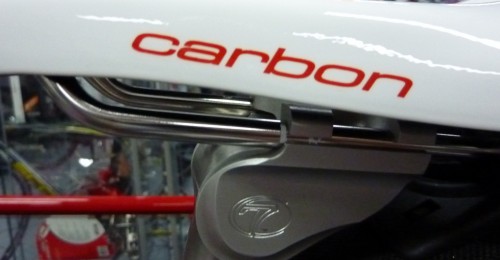 If this advice is followed, then it is unlikely that there will be a problem.
If this advice is followed, then it is unlikely that there will be a problem.
12. Many SMP’s are available with the added designation of ‘Lady’. Glider Lady, Lite 209 Lady and so on. In each case the seat is identical to the usual version in shape and padding with the only differences being cosmetic pink stitching. SMP maintain that a human pelvis is a human pelvis and that a properly designed seat should work equally well for both genders. Another gender related piece of info worth passing on is that it is commonly reported that “Women have wider sitbones than men”. SMP beg to differ. Some research of theirs that came my way suggests that while women have wider ischiopubic rami separation width relative to stature than men do, the average separation width is identical for both genders. My experience with fitting women and SMP’s suggests that SMP are correct that a well designed seat, properly chosen and fitted will fit both genders without problems.
13. Lastly, one of my favourites. With most seats, moving the seat forward decreases measurable seat height and moving the seat backward increases measurable seat height. Typically, if you move a seat forward 3mm you have reduced seat height by 1mm and if you move a seat backward by 3mm you have increased seat height by 1mm. Not so with performance SMP’s. SMP’s have a seat rail angle relative to seat upper that is quite different to most seats. What you will find is that the rail angle is designed like that so that moving the seat forward or backward makes little or no difference to seat height. Whether it does or not will depend on the angle (relative nose down) that you run your SMP, but within the typical range of minus 2 to minus 5 degrees, not much changes with seat height when the seat is moved forward or backward. On a personal level this confirms my view that SMP’s were designed by people who actually thought about what they were doing.
In the model explanations below, I have listed 2 dimensions. The first and larger dimension is the overall width of the saddle at the seat shoulders; i.e. the widest point. The second and smaller dimension is the effective width of the seat before it drops down more acutely as viewed from the side. What I’m trying to illustrate here is that there is not a consistent relationship between the maximum width of a seat and the effective width that can be sat on with SMP or other seat manufacturers, despite much marketing effort that tries to draw such a parallel. Effective width of a seat is affected by the lateral cross section of the rear of the seat as viewed from the rear. If the seat is perfectly flat or tapers gradually down to the sides, then the maximum width and the effective width are the same or much the same. However, if a seat tapers sharply down towards the sides then the maximum and effective widths can be quite different.
Lastly, as mentioned above, most of these seats are designed to be ridden at varying degrees of nose down. A good investment is a digital level and a long carpenters’ level. The long level is to make sure that your bike is levelled between axle centres before you attempt to quantify seat level. A degree or two difference in nose down angle can have a profound effect on seat comfort with SMP’s so it is worth recording what you find works best for you with your SMP.
Some of the pics below are of well used loaner seats while others are of new seats.
Composit Family
I have called the 4 seats below a Family because the unpadded Composit and the padded Evolution and Stratos share a common shell. The Carbon has a carbon fibre shell that is a close relative of the Composit shell in shape, dimension and the rate that it tapers downwards from the centre channel. I term the rate that a seat tapers down from the centre to the edge tumblehome and anyone involved in shipbuilding or design will understand why. All of the Composit family (Carbon aside) are available with the option of carbon fibre rails. The carbon railed versions have much more compliance over bumps and rough roads and save 40+ grams in weight.
Composit max width: 128mm / eff. width 111mm. Typical weight: steel rail 196 gms / carbon rail 153 gms.

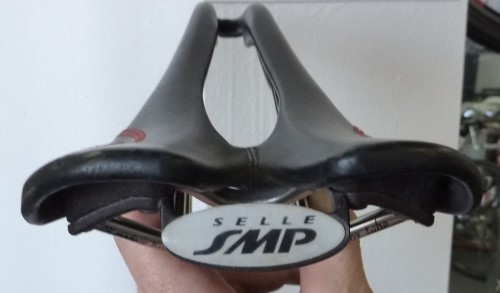
When I was first shown SMP’s some years ago by their local rep, the range was much more limited that it is now. Only the Composit, Evolution, Stratos and Pro were freely available. I ordered several of each except for the Composit. I like firm, lightly padded seats on a personal level but my thoughts were “Who will ride a totally unpadded seat?” Some time later, I fitted 2 gents from Melbourne who were of similar build to me but taller, heavier versions. Both arrived with Composits fitted. I asked what they thought and both gave a strong recommendation. I rode one of the gents bikes and my immediate impression of the seat was “This is MY seat…………………..but it’s bloody hard”
I ordered one and while the shape felt perfect, I was bone sore after long rides. If I rode the next day, as soon as I got on the bike I felt like I had taken up where I left off the day before with no recovery from the bone soreness. 2 and a half weeks later I was on the verge of calling a halt to the relationship when I rode a tough 100kms on hilly and rough country roads and finished the ride without having thought about my backside once. Composits and I have got on well ever since and I have done a dozen + rides of over 200 hilly kms without problem. Yes, I’m aware that I’ve been sitting on a bike seat for 8+ hours by ride’s end but it was a minor issue and I’ve experienced much worse on some padded seats in the past.
I like thin chamois knicks which probably didn’t help my introduction to the Composit. Anyone who rides thick chamois knicks such as can be found in some Assos knicks should be fine. The Composit tapers gradually from the centre channel for a low degree of tumblehome and is a wider platform than it looks. The Composit can be positioned from 2 degrees down to a maximum of 5 degrees down at the nose. The more flexible the rider and the greater their ability to roll their pelvis forward comfortably, the lower the seat nose should be. 5 degrees down at the nose is the practical maximum so that there is still a rise forwards towards the nose from the lowest point of the dip in the centre of the seat as viewed from the side. This is necessary to keep the rider from sliding forward on the seat.
Not many women like Composits though I’ve come across a few exceptions.
Evolution max width:128mm / eff. width: 89mm Typical weight: steel rail 256 gms / carbon rail 213 gms

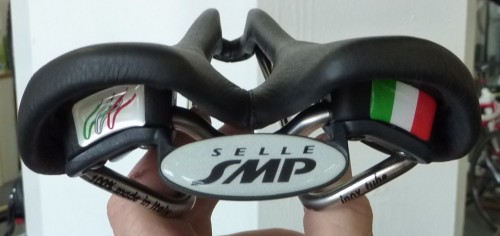
Though the Evolution is built on the Composit shell, it is a much different sitting experience. It has much greater rate of tumblehome and is effectively 22 mm narrower to sit on. I have seen riders too wide for the Evolution squash them into submission over time with their weight flattening out the padding, but this is not something I recommend. In feel, the Evolution is not a Composit with padding. It is effectively narrower and does not have as pronounced a dip in the profile as viewed from the side. I sell and recommend very few of these as they seem best suited to small stature, lightweight men or women with narrow ischiopubic rami separation width. Others can and do ride them but would probably be better off with another SMP option as a first choice.
Typically, these seats don’t work well if the nose is tilted down more than 3 degrees. Yes, there are exceptions, but in percentage terms, not many. The less pronounced dip in side on profile means that they are less suited to the rider who can roll their pelvis forward well. No problem from a comfort point of view because the large centre channel negates any chance of pressure on sensitive areas but the less pronounced dip doesn’t provide as much support under load for the rear of the pelvis as does say a Composit, Forma, Dynamic, Drakon or Lite 209. Good seat but a narrow focus in terms of ideal rider shape / size / weight.
Stratos max width: 128mm / eff. width: 93mm Typical weight: steel rail 269 gms / carbon rail 226 gms
Think of the Stratos as an Evolution with more padding because that is about the size of it. The only real differences are that brand new they have an even less pronounced dip on the profile as viewed from the side and are marginally wider in effective width. Again, I don’t find many people in percentage terms that these are my first choice for.

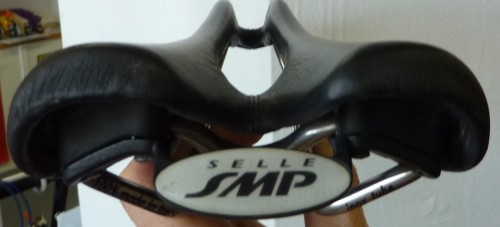
Carbon max width:128mm / eff. width 114mm

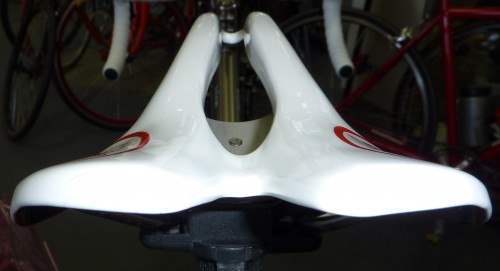
The Carbon is basically a steel railed / carbon shell version of the Composit. I own one of each and there is very little difference when sitting on them. The Carbon can be quite harsh over rough roads because the shell has zero give. What would be ideal is a carbon railed version of the Carbon and there is, the Full Carbon which is available only in naked carbon, not colours. It is also slippery but on a personal level, I’ve never found this to be a problem because I am functional enough and have a good enough bike position to not need to slide around on the seat. I know other Carbon users who are fine with them but from time to time I come across a dysfunctional owner with poor on bike (and usually off bike) pelvic stability that complains about the slipperiness.
The other differences are that the effective width of the Carbon is a few mm wider than the Composit and the rate of tumblehome slightly less. The shape across the rear is less complex and lacks the little dips that the Composit has. I have never found this to be an issue when moving between bikes, one with a Composit and one with a Carbon. To sum up; much more comfortable that it looks but not a seat for poor road surfaces.
Forma family
The Forma, Dynamic, Drakon and Lite 209 all have the same shells. The Forma has zero padding, the Dynamic a thin layer of firm padding, the Drakon a moderate layer of padding and the Lite 209 a thick layer of firm padding. These differences in padding affect the shape. The Forma family illustrates why measuring seat widths will only take one part way down the road of determining the relationship of pelvis width to seat width. All of the Forma Family are wider maximum width than the Composit Family but have narrower effective seat widths than the Composit and Carbon because of the much steeper rate of tumblehome. But they don’t feel narrower to sit on. They feel much the same, at least to this 182cm / 75kg bike rider. In isolation, I would have thought that the steeper tumblehome placed an uncomfortable shear force on the IIR but in practice, it doesn’t. The SMP’s that seem to suit the widest range of rider heights, weights and pelvis widths are the Forma family: Forma,Dynamic, Drakon and the Lite 209.
Forma max width:135mm / eff. width 92mm Typical weight: steel rail 220 gms / carbon rail 177 gms

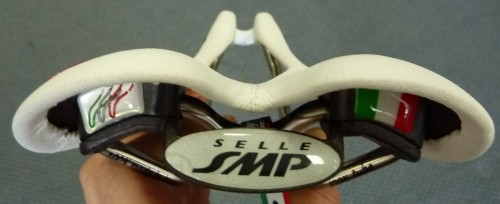
The Forma has a pronounced dip as viewed from the side which means it provides a stable platform with excellent rear of pelvis support for riders who can rotate their pelvis forward well.Ideal nose down angles vary from 2 degrees to 5 degrees depending on the functionality and flexibility of the rider. It is as hard as a Composit but again, the carbon railed version makes it feel almost like a padded seat. I have a number of customers using these who love them but I don’t sell many . The Dynamic below is why.
Dynamic max width 139mm / eff. width 96mm Typical weight: steel rail 252 gms / carbon rail 209 gms

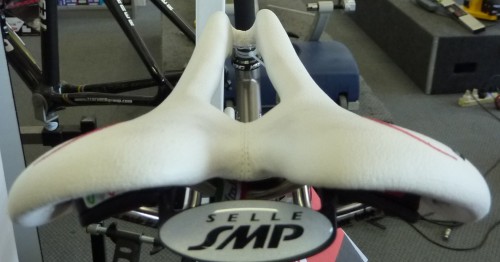
This is my favourite seat in the SMP range. It is essentially a Forma with a thin layer of firm padding. For performance riders there is enough padding to take the edge off the bumps and in other regards, it is everything that a Forma is but with the addition of some padding. Many people who otherwise would use a Forma but baulk at the thought of an unpadded seat choose the Dynamic as a safer option. Much as I like my Composits, the Dynamic, which along with the rest of the Forma Family were not available at the time the Composits hit Oz, would be my first choice of SMP seat if I was in the market now. I have used these seats on male riders from 5’7″ / 170cm and 55kg / 121lbs to 6’4″ /193cm and 108kg/ 237lbs and wildly differing degrees of functionality and flexibility without problems. Just a great all round seat for performance riding.
The Dynamic is best used at a level between 2 degrees down and 5 degrees down at the nose
Lite 209 max width 139mm / eff. width 102mm Typical weight; steel rail 330gms / carbon rail 287 gms.

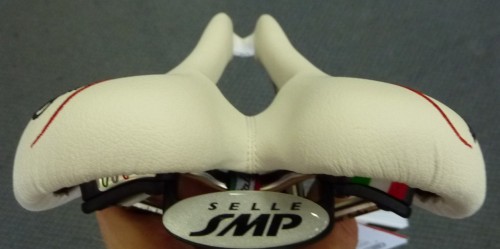
Don’t ask me why this is called a Lite 209 because I don’t know. It isn’t light and I don’t know what 209 refers to. The simple explanation is that this is a heavily padded Dynamic and suits a similar activity profile. Even with the padding it maintains a similar deeply curved profile as viewed from the side but the padding widens the effective seat width by lessening the rate of tumblehome. I use the 209 for heavier riders, endurance riders, Mtb XC riders and a lot of women. I’ve got one gent running around happily on a 209 who is 197cm / 6’5 1/2″ and 120 kg / 262lbs and he hasn’t broken it yet.
Drakon max width 135mm / eff. width 105mm. Typical weight 275 gms steel rail / 230 gms carbon rail.

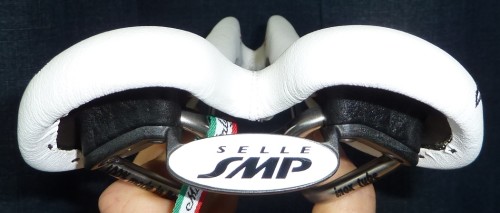
This is a newer addition to the SMP line up. Think of the Drakon as a halfway point between the Dynamic and the Lite 209. Think of it as a Dynamic with more padding or a Lite 209 with less padding and you won’t be far wrong. It suits the same people who choose Dynamics with the benefit for those who need it of more padding. I use a Composit on my road bikes but after a lot of trial and error testing, the Drakon has become my choice for XC mtb racing. Just a great all round seat that suits a wide variety of physiques and weights. I’ve also found the Drakon to be a good choice for athletic women who don’t like a heavily padded seat. The Drakon has quite a lot of padding but it doesn’t feel that way initially. Like all of the padded SMP’s it takes 2 – 3 weeks of regular use for the padding to soften up.
Full Carbon Lite max width:130mm / eff. width 92mm Typical weight 125 gms.

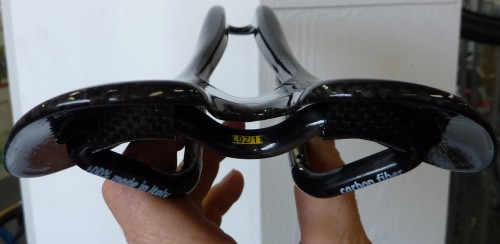
Basically a skinnier, lighter Forma. Very little give in the shell but good shock absorption from the rails to the point where with knicks on, it almost feels padded. Can be positioned between 2 and 5 degrees down at the nose for best results. One for the lightweight junkies but much more comfortable that it appears at a glance.
Orphans
I call the seats below orphans because they all use different shells and are not variations of padding based on a single shell.
Glider max width 136mm / eff. width 110mm Typical weight: steel rail 280 gms/ carbon rail 235 gms

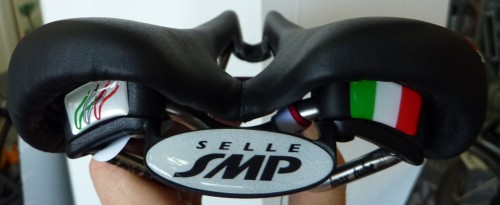
The Glider is flatter across the rear than say, a 209 and wider through the centre with less dip in the profile as viewed from the side. It is an ideal seat for moderately large or heavy men or women who ride in a more upright position. I tend to fit these to flat bar city bikes and road bikes for largish people of less than good flexibility. The Glider is also a good choice for MTB riders. It is best used at a nose down angle of anywhere from level to minus 3 degrees. .
Pro max width 152mm / eff. width 103mm Typical weight: steel rail 343 gms. I’ve never seen a carbon railed version, though they are available.

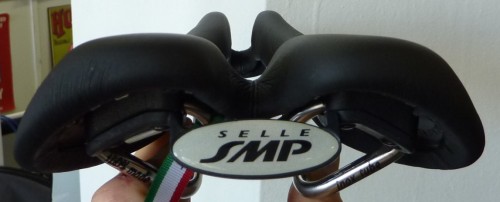
The Pro is kind of interesting. It is a large, long and wide heavily padded seat for large heavy riders, but as you can see from the pic immediately above, the effective width that can be sat on is quite narrow as the the tumblehome is very steep where it drops to the edge. I’ve always been mystified by this shape but have found it to be a good seat for taller, heavier riders who don’t have very wide pelvises. Large, skinny skeletoned people who carry a bit of weight seem to find it ideal. Best fitted to comfort bikes and road bikes for recreational riders of that size and morphology. Nose down angle range that suits best is from level to minus 3 degrees.
Chrono max width 122mm / eff. width 95mm. Typical weight: steel rails 210 gms. There is no carbon railed option

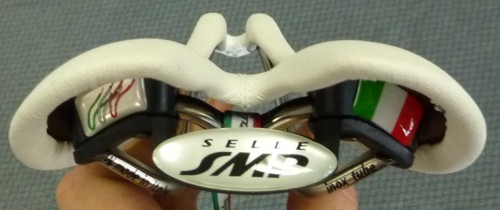
This is SMP’s take on a TT seat. In modern terms that means a seat with a length that is the minimum necessary to ensure UCI compliance. Most TT seats of this type are designed to keep the UCI happy while allowing the rider to effectively sit further forward than would otherwise be possible. The Chrono will allow this compared to the rest of the performance SMP range, but not when compared to other TT seats. The reason is that like all SMP’s the shoulders of the Chrono are much further back towards the rear than is common on other brands. Translation: the rider sits further back relative to the length of the seat than they would on say an ISM Adamo or similar. Much further back. So if you want to sit forward UCI legally, this is not your best option. The other issue with the Chrono is the the deep dip in the profile as viewed from the side. This is similar to the Forma Family, in fact the Chrono can best be described as a scaled down Forma. This presents a problem for anyone approaching an slightly small to average size human. The shorter front to rear length of the dip means that a female riders vulva or the area just behind a male users scrotum gets jammed hard into the rise towards the nose. Basically, the dip is too short for anyone other than children and very small teenagers. There is a market for this seat but it is not for anyone of even average size in either gender. Tiny people only need apply.
Avant max width 153mm / eff. width 135mm Typical weight: steel rails 367 gms. I have never seen a carbon railed version, though they do exist.

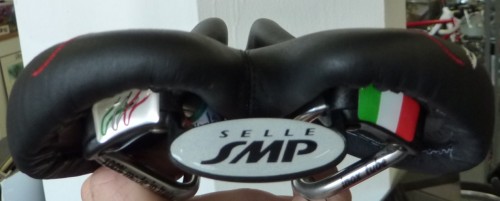
The Avant is SMP’s vision of a high quality, large well padded comfort seat for large, well padded men and women. For the right rider, this is a great seat designed for an upright position, usually on a flat bar bike. I’ve had many heavy women and some heavy men who despaired at ever finding a comfortable seat and who found Nirvana on an Avant. Best used at an angle from level to minus 3 degrees. This has become my first choice of seat for the right kind of fit client. If is flat in profile across the rear and offers good support for bones and flesh when there is plenty of both. The width of the centre channel cutout is the widest of the SMP range. Many readers rider performance bikes and laugh at seats like this. Don’t. They have their place and have enhanced the cycling experience for many. The more bums on bikes of whatever type, the better a place the world will be.
Conclusion.
I hope this have given you some insight into SMP seats; or at least, my take on SMP seats. Here is a link to SMP’s Seat Selection Table. My experience is at odds with SMP’s suggestions for Chrono, Evolution and Stratos but similar to their recommendations on other seats. A simple and useful guide. Also worth reading is some of the other info on their site as it is more comprehensive than that offered on the sites of other seat manufacturers in the areas that count. Click on http://www.smpselle.com/smp4bike/en/support/selection-table and then look at the Ergonomy and Support tabs.
I’ve also got to mention that I have no connection with SMP, nor have I been offered or accepted any inducements. They are just the brand of seat that helps solve a lot of fitting problems, whether it be comfort, or just as often, an inability to allow a rider to sit back far enough.
Addendum: Instructions for changing seats
1. Lock up the bike in an indoor trainer and use a carpenter’s level to make sure that the bike is leveled between axle centres. This is important as everything you do will only be accurate if the bike is level and stable. In addition to the carpenters level, you will need a steel rule 300 mm long and a marker pen
2. Measure the flat section of the seat rail and use the marker pen to mark the midpoint in the length of the flat section
3. Measure from the flat section to the top of the seat directly above the point you have marked at the midpoint of the seat rail. Record that measurement as seat depth
4. Lay the new seat upside down on top of the old seat so that the curves forward of the seat shoulders match up as closely as possible. The seat shoulders are the most forward part of the widest part of the rear of the seat. The curves are where the seat narrows as it comes forward from the shoulders. Match up the profile of the curves as best as can be done.
5. Note whether the nose of the new seat layed upside down on the old one is forward or rearward of the nose of the old seat currently fitted. Record the difference as seat nose difference. A plus number means that the new seat’s nose is forward of the old seat. A minus number means that the new seat is rearward of the old one.
6. Measure from the centre of the bottom bracket (centre of rotation of the cranks) to the top of the old seat fitted to the bike. Make sure that the measuring edge of the tape passes through the mark on the midpoint of the seat rail. Record that measurement as seat height.
7. Measure from the tip of the nose of the old seat to the back of the handlebar. Make sure that the front wheel is facing straight ahead. Record this measurement as nose to handlebar
8. Remove old seat and fit new seat. Make sure that you mark the midpoint of the seat rail. Fit the new seat at the same seat height as the old seat making sure that you measure seat height in the same way. Look at your seat nose difference measurement. If it is a plus number, move the new seat so that it’s nose to handlebar measurement is that much less than that of the old seat. If it is a minus number, make sure that the new seat’s nose to handlebar measurement is that much more than that of the old seat.
9. Recheck seat height and then recheck nose to handlebar distance. This is as close as you will get by measurement. Any further adjustment must be done by feel. This method will only work as accurately as the measurements you take. Even then, I am relying on you to have enough awareness of how you normally feel when pedalling to recognise that feeling when you duplicate it on the new seat.
For additional quality information on SMP seats in particular and using bicycle seats in general, read Colby Pearce’s thoughts on the matter here
Note: Often, more specific answers to your questions can be found in the Comments below or in the eBooks section and FAQ page.
To learn more about bike fit products offered by Steve, click here.
Do you have a bike fit success story? Please go here to share.
Thank you for reading, return to the Blog page here or please comment below.This Post Has 106 Comments
Comments are closed.

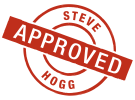
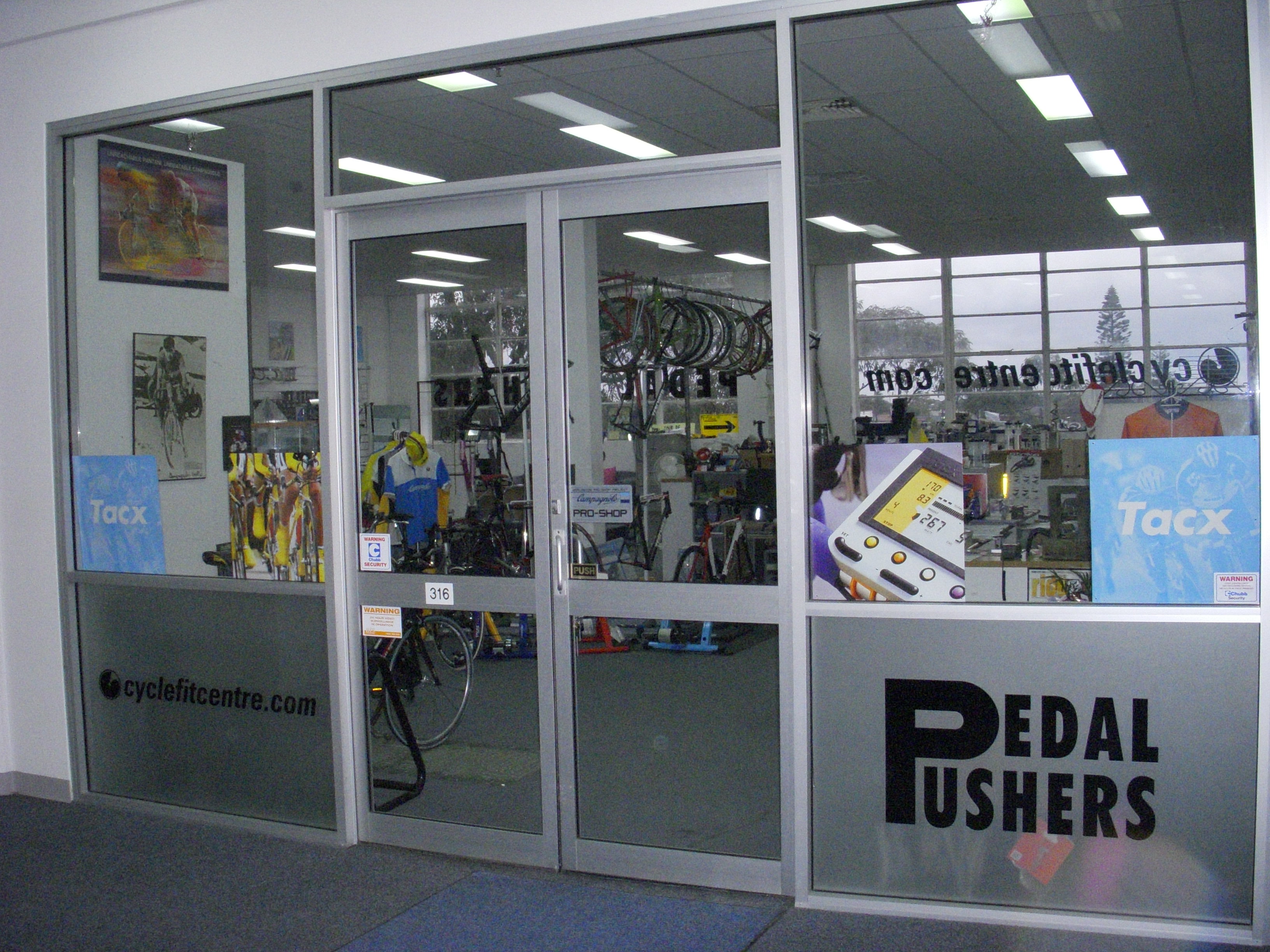
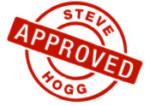

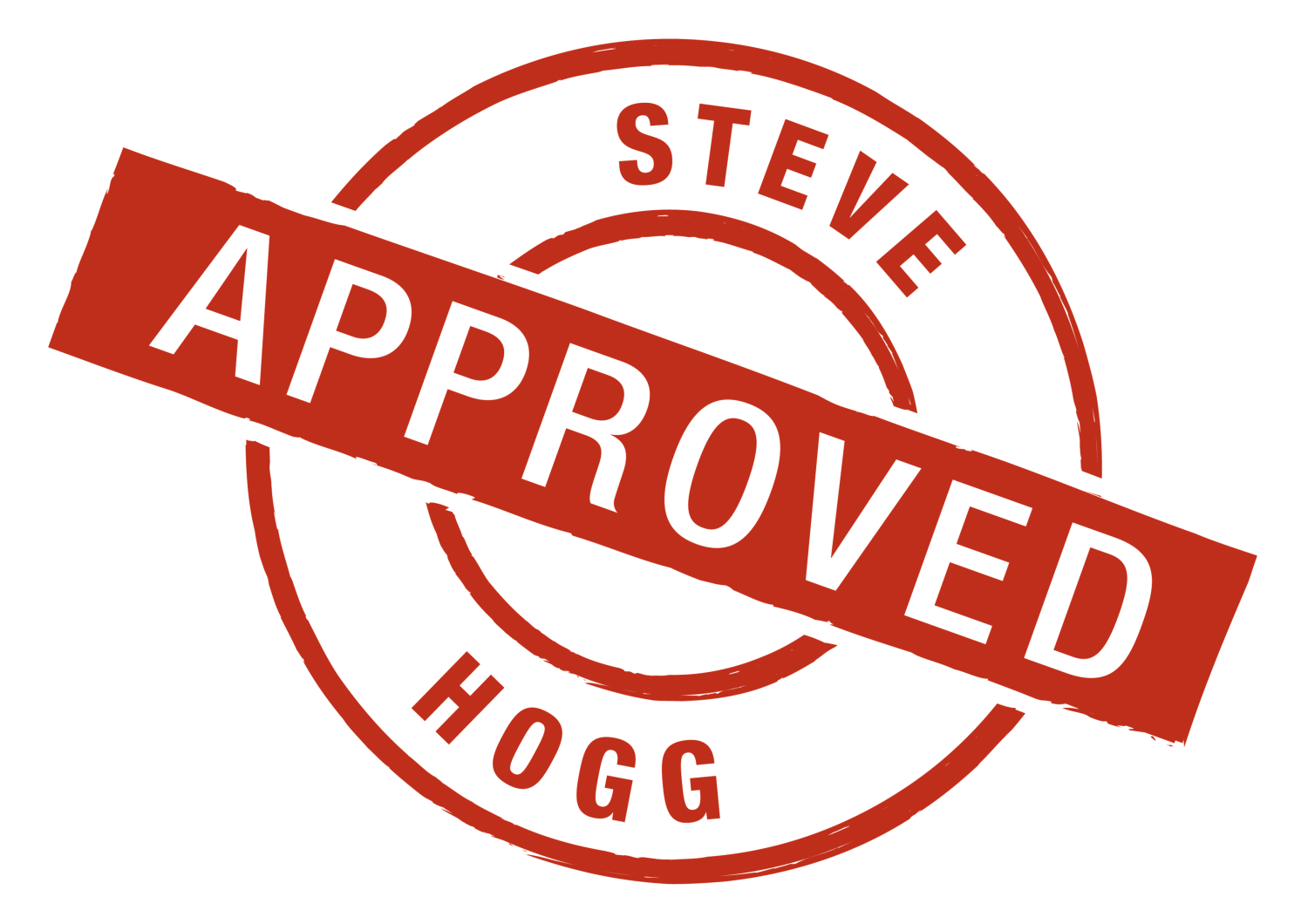

Superb post Steve. Posted 2 months earlier would have saved me ~$120 wasted on 3T Dorico Pro seat-post which had to be junked in favour of trusy Thomson Elite seat-post because as you said 3T Dorico Pro did not get along with SMP Dynamic seat and one of them had to go! 8^)
Can you please share the make/model of the digital angle-level device and where to buy it in Australia? I use Tajima non-digital dial protractor device but it’s not very accurate, I fear. On Tajima device I find SMP Dynamic works for me on 1-degree nose down angle but I am “as stiff as a board”.
G’day Yuri,
Any digital level will work. I’ve got several. The most
expensive is a Bosch but it gives the same readings as a $20 job from Bunnings. Re angle of seat; typical is as I’ve written but there are always exceptions. Having met you Yuri; I know you are exceptional 🙂
Great article Steve. Just another example of why I always tell customers that a bike fit will only ever be as good as the fitter’s knowledge base and experience – not the tools they use. And its one of the reasons I wont buy a Specialized Assometer even though really want me to.
G’day Stuart,
An Arseometer? Catchy name:)
yeh..i knew you’d like it.
Your article gave me a eureka moment on my bike fit. Ive been trying to work out why the fizik saddle i have had for the last 4 years has been feeling less comfortable and ive been trying a few saddles to find one that works.
I found that as my flexibility has improved marginally through the hips/back, i am rotating my hips forward more and this is causing pressure in different areas.
Saddles with a different shape work better for me now. (selle italia SLR with cutout or specialized phenom and the romin to some degree).
And just because my “sit bones” are 115-120mm wide, i still find saddles that are 143mm wide (specialized recommendation) actually dig into the back of my thighs, which hurts over time – the phenom is the only one theirs that this is not the case but its not perfect – it still digs in a bit. Im not sure why the SLR works exactly, the cutout helps and its fairly level across the rear. It does have a raised section at the back and my theory is that the raised section is where I sit on and that takes pressure off elsewhere.
Glad to be of help Stuart. The SLR is a good seat for many if it can be placed at the right seat setback. There’s not much rail adjustment potential. Underneath the padding, the shell is a clever shape and suits a lot of pelvises. How did the you go with the Romin?
That is the Specialized seat that I really rate for many.
HI Steve from the South of France. Great post on SMP saddles. I am very happy with my Dynamic you recommended after wearing out my Evolution you recommended a few years back. Very good point you make about some seat posts not working well with them though. I agree with Yuri re 3T posts not agreeing with SMP saddles and I will be investing in a Thomson Elite when we get home. Just read the Cowboys U20’s made the GF next weekend. Sounds like Manly were way too strong for the Broncos without Lockyer. Big wrap for Warriors if they beat Melbourne & get both sides into GFs. We are staying in a beautiful rural area Pecharic with Aussie friends who have settled here about an hour South of Toulouse. I can see Pyrenees from the window as I’m typing. The house is older than first British settlement in Oz. Unreal. Take care. Darren.
G’day Darren,
I’m glad that the trip is going well. Thomson’s are THE
post for mine, assuming the rider can get the setback they need with them. Bronco’s tried hard but the Seagles just steamrollered them in the first 40 mins. Tony Williams is playing out of his skin as a back rower and the Broncos found him hard to handle. The Cowboys U20’s will likely face the Warriors which is a tough assignment but best of luck to them. Warriors / Storm was close but the Warriors had their measure for most of the game. Too big, too strong, too unpredictable. The Storm were their usual selves. Tough, structured and ruthless. The big Warrior forwards got over them up front meaning that Slater and Smith didn’t have the room and space they are used to. Enjoy the holiday and see if you can find the GF on cable somewhere in southern France.
You know im fortunate that I dont need to set the seat back much!!!
The romin shape is a great saddle, BUT – the nose is too wide for me. And a few (15%) of people ive fitted with the romin say the same thing. But the overall shape is good i think for most people and Ive had a lot of success using it with customers. I just find that with my thighs and nix, I really notice it rubbing at the nose. The Phenom is a similar dip shape – not as extreme on the cutout but is just that bit narrower at the nose. Its still not perfect, but its better.
Interestingly, i said to specialized that i thought the romin was too wide in the nose and I was poo pooed on this. BUT – Watch this space on the next romin however!!! If what I hear is correct, i may have a new favourite saddle.
The toupes can be good too, especially initially, but the start off flattish and then within a short amount of time, they sag and get quite a bit of dip in them.
For me, the SLR is the saddle of choice ATM followed by the phenom.
Have you fitted anyone with the new Regal or Rolls from san marco…..talk about no setback adjustment….. They rails are well back on the saddle. Even I cant use one of these as there is no way to get them far enough back!
I agree. I’ve had a few smaller clients with Romins make the same comments. For most though, great seat. Not crazy about the Toupe because of the sag issue. Okay for lighter riders but for anyone else, they sag quickly.
Re Rolls and Regals, add the resurrected Concor Supercorsa to your list. Short rails positioned a long way back meaning negligible setback potential. Fine seats for those they work for but, yes, a problem for anyone needing reasonable setback.
100% agree. Especially the toupe. Now i think about it, only smaller / lighter riders ive had success with fitting it to.
I must be doing something right!!!
Hi i am eager to try a SMP but want to wait to get a bike fit with the bike wisperer when i get a new frame. At the moment i am using a Selle Italia SLR flow and Specialized Romin do you have any advice for the angle they should be set at i can’t seem to get comfortable on either?
G’day Danny,
SLR’s typically work best at a nose up angle of 0.5 – 1.5
degrees at the nose. The Specialized Romin are typically nose down 1 – 3 degrees at the nose. They have a kick up at the back much like SMP but not as pronounced. If you can’t get comfortable, it probably has as much to do with where the seat is as what it is. I would suggest seeing The Bike Whisperer before you get your new frame to confirm to you
the appropriateness of your choice of frame or otherwise.
G’day Steve, which would you recommend for a 60 kg 5 ft 9 inch rider for MTB endurance racing on a hardtail? Considering the Lite 209…thanks! I sit with about a 45 deg torso angle on this bike if that matters.
G’day Jkarrasch,
you’re a light guy and a Lite 209 is likely fine for
you on an Mtb. On a hard tail, probably a better choice than a Dynamic. I’m not sure that it is relevant, but I’ve been talked into a 24 hour teams event later in the year and own a hardtail. I plan to use a Lite 209. There are no certainties though. Are you able to try before you buy?
Yeah, I can demo one. Will try Lite 209. Thanks.
Set up is critical. One degree too far up or down can impact on comfort more than you would think for many.
Love the bog – Thanks for this!
I have a Composit, which I love. For me the squarish shoulders midway through the saddle feel much better than the forma did, as the forma has a more “sharp” peak on each edge (the shell tapers up from the outside rather than being squarish like on the Composit.
When you speak about saddle angles on the SMPs, where do you place your level? Are you measuring over the top of the back of the saddle and the peak at the front like if you placed a book over the whole saddle?
G’day Naisan,
Yes, measuring as you’ve indicated.
Hello,
I have a question regarding SMPs and pelvic twist…
Have you ever seen evidence that a SMP helped a person sit straighter on the bike? It seems that there is very little room to move around on the saddle, like it cradles your bum and there’s only one place to sit. Other saddles, particularly flatter ones sort of allow a rider to slide around a bit, therefore possibly encouraging or enabling twisting of the pelvis as a habit.
Thanks for such a brilliant site!
G’day Julie,
Good question. Yes, I have. I won’t say that it is common but
on occasion, particularly if using the Composit model, there can be a positive effect on on bike pelvic symmetry. There are a multitude of reason for on bike pelvic asymmetry and one of them is a lack of frame of reference. That is the seat is, as you say, a more or less featureless blob leaving the rider sitting on it prey to any inherent neurological bias as to how they sit. The Composit is hard and makes the rider acutely aware in the early stages of usage, just what they are sitting on. It is also a seat that makes it obvious to the rider if they are not sitting squarely.
Steve, Great Post! I have a Felt B 16 Tri bike size 54, I am a 5’9 female and weigh 135. I am size 4 in cloths. So I’m tall and thin. I am comfortable with my bike fit after several attempts now. My back is flat when I lean forward in my bars. I have tried several seats and could not tolerate the width of the Adamo, or the Cobb. I am happiest with my latest seat the Avant although after I read your blog I see why it’s still not perfect. It’s made for someone a little bigger than I. My issue with this seat is after a long ride (for which I always stay in my seat for climbs and I am of note and 7 weeks out from my first Ironman), the seat seams to pinch my groin area on each side of the seat. The skin is always red and sore and pinched in the folds of my groin area. The issue of the other seats was always the pubic bone pain. I don’t have that with this seat but I’d like to wear the elastic around my legs for my underpants comfortably after a long ride :-/ Any suggestions. I looked at the seat chart that you posted for SMP it lists Carbon, Composit, chrones, evolution and stratos for my body type. Seems like when I read those in your blog non of them really stood out as the winner. HELP 😉
G’day Rebecca,
It sounds to me like the Avant is just too wide in the midsection of the seat. I’d suggest trying the Lite 209 and the Glider. SMP’s are expensive and many shops that sell a few have ‘loaner’ seats. See if you can track down a shop that does and borrow each of those models for a week. The first few days will be spent getting the position of the seat correct and then you need to do at least one long ride to make sure the the problem that you speak of doesn’t arise.
Let me know how you get on.
Excellent article. I ride the Lite 209, which was perfect on my previous bike, but now I am having problems with the new bike. I am bent over much more due to the geometry of the new bike, and while it is comfortable for me, I am finding my saddle not as agreeable. I keep getting a welt on the right side, right outside the outer labia, on any ride over 40 miles. 30 mile rides, I do not get them, but over 40, I get a welt that gets bigger the longer the ride is. It is like the flesh is being pinched repeatedly inside the cutout. I love the fit and shape of my saddle, but it seems that it is a bit wide. What would you recommend I try?
G’day Anna,
Based on what you’re telling me, it is likely that being
“bent over much more due to the geometry of the new bike…..” is the problem.
I assume that the previous bike position had your torso positioned higher than the current one and that you weren’t experiencing this problem. If so, you may be comfortable in the sense that your back doesn’t hurt and that you are flexible enough to bend low enough to reach the bars on the new bike…………..but if you are bending too far, your ability to maintain a stable pelvis is under pressure and you are attempting to compensate for this. Like all compensations we engage on a bike (below conscious thought), you are compensating asymmetrically. This is what is jamming the right side of your labia into the seat. You are probably sitting with the right side of your pelvis twisted forward because you are riding a position that you can’t more or less symmetrically maintain.
Is this a tri bike or a road bike?
What was the previous bike and how do the positions you held on each differ?
This is a road bike. I went from a 56cm Trek Pilot 2.1 to a 54cm Specialized Allez Pro. The trek was just too large; I had reached the limit of what I could do to make it fit me so I went to the smaller Allez. You are right, I was much more upright on the Trek (much taller head tube). My arms were also stretched out too far for comfort despite a 70mm stem at a 40 degree angle. I do actually prefer to be more bent over as I am now as I have worked on my flexibility. It is more comfortable and I feel more efficient in the position I have now. Everything feels right, except for the pinching I am getting from the saddle due to me being more bent over and thus my pelvis being in a different position. I have fidgeted with the angle of my saddle, and nothing seems to correct for the pinching that I get after a certain amount of miles. I had thought that a narrower saddle would help, but given how pricy SMP’s are, I thought I’d ask you before looking into a narrower SMP saddle.
G’day Anna,
You may well be right.. However, if you are bending too low, the first compensatory mechanism we enlist is generally to twist the pelvis and this is why you are getting right side pain only; you are twisting your pelvis forward and in towards the centre line on that side. Of course you may already have been doing this on your previous bike but may have been more or less protected by the more upright torso position that was forced upon you by a larger frame.
Other factors that may well be contributing are seat height, cleat position and foot correction. Have you been through the posts on those subjects and acted on them?
Hi Steve,
Sorry about the delay in response.
I have my cleats slammed back as far as they can be (size 39 specialized s-works shoes with spd-sl cleats) after some considerable experimentation with the cleats slammed and moved forward in small increments. I found that my calves and achilles objected to anything other than the cleats as far back as they could go. The cleats are zero float (strangely enough going from the yellow to red cleats finished off the lingering knee pain i got when i did a lot of standing on a ride) and are set up to point my toes slightly out, the right more than the left.
Seat height is still a work in progress, although I believe I am in the ballpark now. It has been coming steadily down for some time, but I think now I need to bump it back up 2mm and I’ll be at a good place since the last ride I did at the current height had me a little tight in the achilles right down at the heel.
I think you are right about the pelvic twisting. I just recently noticed that on the left foot downstroke, my handlebars pull ever so slightly to the left, as if my right side is advancing forward. If I look at my saddle, the right half is more compressed than the right, the meaning of which I am not qualified to judge. I have not have my leg lengths measured via x-ray, but more than one medical expert has judged my legs the same length via a visual exam.
G’day Anna,
if you are compressing the right side of your seat, you are
dropping the right hip. That may also be the reason that you are getting the right hand Achilles tendon niggle. If the right hip drops the right leg extends less. If there is no sensation that the left leg is overextending, then you may be dropping the right heel more than the left to gain extension on the right side. I’ve seen this happen and often Achilles tendon niggles on the side with the greater heel drop is part of the picture, particularly if the cleats are too far forward.
You mention that your cleats are all the way back on S Works shoes but don’t say what the relative cleat position is. Do you know your cleat position?
If in doubt, see the posts Why Bikefitters Don’t Chew Their Nails and Power to the Pedal – Cleat Position and find out. It is important to know your relative cleat position as that may be part of your problem.
*
*
Utilizing those two articles, I would estimate that the ball of my foot is roughly 6-7mm in front of the center of the pedal axle. I’d love to move the cleats further back, but the shoes simply will not allow it unless I have them re-drilled, and I have no idea where I would even have that done, if it is possible.
I did forget to mention in my last post that I am using the green specialized footbeds with 1 varus wedge in the left shoe.
Anna, don’t guess. Measure so there is some certainty. If you cannot move the cleats back further than they are but feel the need, ditch your pedals and get hold of Speedplay Light Action, Speedplay X Series or Speedplay Zero pedals with the optional extender baseplate (Speedplay part no. 13330) to allow you the cleat position you choose to have.
If memory serves, your original query was because you had a smaller frame with lower front end resulting in your developing issues with the seat on the right side that were not present on the larger frame with higher front end. It follows that you probably need to raise your bars on the new, smaller frame to resolve the pelvic issue.
Well, its kinda tough to get that spot just right if I am doing it myself since my foot rolls outward when I bend down (not sure why, it just up and does it *grins*). I did measure with a tape measure, just not sure I got the very precise point on my foot.
I had considered Speedplays when I got really really tired of my Look cleats falling apart if I looked at them funny, but remembered all the hot spot problems I had with spd’s, and so wanted to avoid small contact points, hence my choice of SPD-SL’s.
Only way I can raise my handlebars at this point is a higher angled stem. I still have a 70mm 40 degree stem, I will give it a try and report back when I get a decent ride in (currently down for the count with a head cold).
G’day Anna,
one common fallacy with Speedplays is that there is a small
contact area. With pedal engaged in cleat, the pedal body upper surface barely skims the underside of the cleat baseplate. What that means is that the ‘effective’ contact area is the entire cleat not the pedal. In other words, there is a large contact area.
Hi Steve from here in good ol’ Blighty ( we’ll not mention the rugby . . .). I’ve ben using a Selle SMP TRK for most of this year as 1) it’s only £40 and 2) seemed to offer the obvious solution of presuure on the internal bits of a blokes penis – something I have never undestood with traitional saddle designs. Anyway straight away the pressure shifted from where it was to somewhere a lot more comfortable. This took a bit of fidling about with angle tho’. Anyway I have just completed my 1st Ironman distance and all went well until I had a bit of inspection the day after and noticed that either side of the pubic bone / groin crease area was a bit red & tender. Presumably as this was the first 112 miler & most of it was on the tri bars. Apart from this I am totally conviced that the SMP is for me. Two questions – any comments on my tender issues and do you know why there is such a massive price difference between my most basic TRK and the likes of the Lite 209. No idea why but I feel I should upgrade. Once sorted I’ll need a new seat for my other bikes aswell %-).
Thanks for an excellent article that explains simply the differences between the saddles.
Cheers, Michael
G’day Michael,
Firstly the chafing. Yes, it may have been a longer than usual ride for you and one that your body isn’t conditioned for………………..yet, in terms of supporting weight. It could also be that your knicks have ridden up your leg and bunched in the area where the inner leg joins the pelvis.
Re the difference between seats. The TRK is part of a line of SMP cheapies. Many of them don’t have the same length of flat rail and so they have less potential to adjust seat setback. Additionally, the construction is quite different with the upper being made of some sort of expanded foam with a bonded on plastic cover. I don’t have huge experience with the lower end of the range and have used them only for customers with comfort bikes. That is recreational riders not doing much mileage on upright, flat bar style city bikes. I forget the others in the range of similar seats and just checked the SMP site and can find no mention of them.
I’ve always found the cheaper line of which the TRK is one too be much softer and less supportive than the higher quality models that SMP do mention on their site. As someone doing Ironman racing, I would encourage you to try higher quality seats. Many shops that are serious about SMP’s have loaner seats to try before you buy.
Thanks Steve, forgot to mention that it’s good to find someone who explains the difference between the various options. Reading your stuff I’m heading towards the 209 Lite. What do you think about this for someone spending 5-6 hours on tri bars. Cheers, Michael
G’day Michael,
Unless you are tiny or extremely large, I think the 209
is likely a good choice for what you want to do with. The nose down angle is crucial. Experiment a bit because a couple of degrees too far down or not far down enough can have an enormous impact on comfort.
You’re a good un Steve thanks very much. I’m 5’9″ & 10 1/2 stones so neither tiny or extremely large. Guess the 209 is going on my Christmas list to Santa .
Cheers, Michael
Hi Steve,
Fantastic article!
I’m new to cycling and have been struggling with the saddle that came with my Schwinn LeTour Elite. After 15-20km I get bad perineal pain. I was tending towards an SMP or a Fizik, and after reading your article I’ll probably go with the SMP. I gather from what you wrote that probably the 209, Avant or Pro would suit me best. Is that correct? Anyone in particular you would recommend? I’m 198cm, 88kg, waist 87cm.
Thanks a lot!
Cheers,
Pat
G’day Pat,
By the sound of it, you’re very tall but not heavy for your
height. If your bike is a flat bar bike, then possibly the Avant or Pro, but if it is a drop handlebar bike, then look at the Glider, Lite 209 or Dynamic. What would be best is if you can find a shop that will allow you to test ride a few SMP models.
G’day Steve,
I followed your advice and at shop the owner recommended the Plus (and told me I could swap it for another one if I didn’t like after a couple of rides). So yesterday I went for the first ride (just over 25km) and felt pain in the ischiopubic ramus. Is this common when you first ride on an SMP? I wonder if I should try to get used to it or just try a different model. It is difficult to explain but the impression I got was that my weight was distributed between the ischial tuberosity and the inferior pubic ramus. Have you had people with similar experiences? What did you recommend? Thanks!
G’day Pat,
What you are talking about may or may not be a problem. The
most obvious thing most riders experience when trying an SMP is the absence of diffuse pressure and the increase in obvious pressure on the ischiopubic ramus which most of us are not used to having loaded so specifically.
Assuming your Plus feels supportive and comfortable with the only negative being what I’ll call bone soreness, you should be fine. As you will read in the post above, I had a similar experience for the first 2.5 weeks I used an SMP as have many others. I persevered because bone discomfort aside, the seat just felt ‘right’. This is also why when a rider borrows one of our loaner SMP’s with a view to buying a new one, I insist that they trial it for a fortnight, not just a ride or two. After 2 weeks, the riders that experience bone soreness (not all do) know they are on the improve. This is also why I won’t loan an SMP to a prospective customer unless I am the one to fit it to their bike. SMP’s are a more ‘technical’ seat than most and if they are positioned wrongly for the rider, can sometimes not be a lot of fun to ride.
Additionally, if your seat is too high, this will increase the pressure on the bones of the pelvis so have a read of the 2 posts on Seat Height.
If you are convinced that seat height, seat setback and the angle of the seat are fine, persevere. At the end of 2 weeks riding, you will know
whether an SMP is for you or not.
I have a SMP pro which I use exclusively for a small bit of winter training I do with Powercranks. The SMP really reduced the man bit mushing that comes with using powercranks. I would probably buy another for my in-season bike but SMPs decision to add stitching has discouraged me. My experience with stitching on the surface of saddles has always been miserable.
G’day Mqkemp,
When SMP’s first appeared they had large embossed style
stitching of the logo. On some people that wore their knicks away. SMP then reduced the ‘projection’ of the stitching by a large margin and my experience with clients since is that the only ones that have had problems post stitching change are those who are radically unstable on the seat and move around a lot.
If that isn’t you, it is likely that you will be fine.
Steve, thanks for the good info here. In your experience if a rider changes from a Pro to a Dynamic or Lite 209, do they need to move the seatpost up or down due to differences in rails to top of saddle distance?
G’day JR,
Yes they do.
Steve,
Great answer to an unclear question! Chapeau, sir:)
What I was really asking was how the overall height of the Pro compares to the Dynamic/Lite 209. I’m assuming that with less padding the Dynamic would in general require a slight rise in seatpost compared to the seatpost position when using a Pro. Wasn’t sure if how the shape/padding of the Lite 209 would affect seatpost height compared to a Pro. Hence, wondering about your experience with them. Thanks!
G’day JR,
I’m at home at the moment and cannot measure any seats to tell
you definitively. That doesn’t matter anyway because I do next to nothing by measurement, but by observation under varying loads. Still I want to try and help. I have just added a postscript at the end of the post above that I give as a hand out to customers. It it is the best answer your question that I have.
* *
Hi Steve,
A couple of questions related to SMPs but first of all a bit on eSoles and shoes. I bought a pair of eSoles after reading about them on your blog and may have posted a question about them; anyway the moment I tried them on my shoes felt more comfortable. After I got them I was also on my way to try on a pair of new shoes (size 48 I have to get them reserved) and wondered if I needed them as the shoes I had on now fitted much better. Anyway suffice to say I got a pair of Specialized Expert Road shoes and my foot and shoe feel as one on the bike now – much better – a sign of me being a keen, knowledgeable yet still novice cyclist perhaps. So you certainly helped there.
Now re SMPs – Does the shape limit moving forward on the seat as I sometimes do when pushing hard and may do during a time trial (one done so far but plan to do more next year)?
Does your default pelvic position play a part in choosing saddle and saddle comfort? From visiting a sports masseur my pelvis is often rotated forwards and guess this fits with my back being pretty flat. Imagine this is due to some muscle weakness or imbalance of some sort. If so what do you think it is most likely to be the cause and possible solution?
I read with interest how SMPs help with being on the drops, which I like to use and having read that and rest of the above am keen to get my hands on one. Though I often have a very stiff back from sitting at a desk and being too tall for my desk and computer set up (6’3” / 191cm) mostly I think I enjoy stretching my back on the drops and my limitation for being there is my neck and the muscles on top of the shoulders near to it (traps?). Again possibly because my screen is raised but still on low side. Are there are any things such as stretches you can recommend for helping with this?
Many thanks,
Craig
G’day Craig,
I’m happy that the Esoles did the trick for you. Quality arch
support is THE most important part of foot correction.
Q: Does the shape of SMPs militate against moving forward?
A: To a degree. The rise towards the nose of an SMP makes moving forward on the seat uncomfortable. However, the need to move forward indicates that there is something awry with your position, your degree of function or both.
Re seat comfort; there is nothing about the principles that I espouse regarding bike position that determine a seat. There is so much individual variance in what makes a person happy with their seat that this is not possible. Unfortunately, trial and error is still the best way. Any shop that is fair dinkum about selling seats will have ‘trial’ seats that you can borrow.
Why is your pelvis rotated forward?
The likely general cause is overly tight hip flexors, particularly the psoas major. It originates on the front surface of T2 and the entire lumbar spine and inserts high on the inner femur. If overly tight, and it is very common for this to be case; too much sitting / not enough stretching; then the lower back and pelvis are pulled forward. What to do?
If you would prefer instruction, get on a first name basis with a yoga teacher. If you prefer self help, there are some quality stretching books in
the Store section of the site.
Re your question about specific stretches. I’m not crazy about recommending
specific stretches because a specific body part hurts without personal
interaction between us. The body part that hurts is not always the problem.
The larger question is “Is that part of the body hurting because it is a
root cause problem OR is it hurting because other issues are conspiring to
load it inappropriately?”. Rather than suggest a band aid approach, I advise
everybody to spend 2 – 3 hours a week performing a gentle, all of body
stretching regime. That solves most problems over time.
Thanks for the great information Steve.
I have been riding an SMP Composite and Carbon saddle for a number years now and find the comfort exceptional. Combine this with the excellent build quality and adjustabilty the higher price soon fades away. Although not for every cyclist SMP saddles work for many of my customers, male and female road and tri enthusiasts alike. I carry the line in my store and offer a “ride before you buy” service which has proven to be very helpful for clientele looking to purchase a new saddle.
Cheers
Mark
G’day Mark,
I’ve found the same thing. If a customer can try first, the
price becomes secondary once they know what they are buying into
steve, i have asked a few questions in the past, thanks for the help. here’s 1 more, so my right femur is about 1/4″ shorter then the left, but when sitting on the saddle as soon as i clip in i can physically feel my left sit bone rotate forward. i have tried shimming the right foot and canting the left foot but nothing seems to straighten me out. what are some things you do to straighten someone out?
G’day Matt,
Firstly, the solution may not lie on the bike but off the
bike. Often the way we sit on a bike is a more or less reflection of the way that we function off the bike.
However, if the bike is the culprit, the two most likely reasons are too high a seat height and lack of arch support.
Steve hi and thanks for an enlightening article. Based on the SMP sizing chart, I fall into the Pro territory, however I also fall within the range of people you have fitted the Dynamic on. Looking at the crossections of these two, it appears as the tublehome takes away of the width of the Pro.
I am using the Specialized Toupe 155mm with good results, I have also used the Specialized Avatar 155mm with similar results (some discomfort after 40 miles which is fought by moving around on the saddle). I am 6’1″ and 240 lbs. Typically, I prefer less pading as I have found that thicker padding tends to be counterproductive for longer rides. Do you think I will be better served by the Dynamic or the Pro?
Thanks
Pete
G’day Pete,
Much as I’d like to, I can’t answer definitively. The basic differences in feel are that the section you can sit on with the Pro is much flatter than the section you can sit on with the Dynamic. The Dynamic tapers down much more quickly from the centre. If you have a decent shop locally that stocks SMP you should be able to trial both.
If not, and in light of your comment about liking thinly padded seats, I’d be tempted to suggest the Dynamic. The Pro has a LOT of padding.
I ride a Selle SMP TRK mainly for budget reasons I have that saddle on my road bikes and on a touring bike. I am 6′, 260 lbs, and 60 years old. I am still trying to get myself fit to the cycles with saddle adjustments and adjustable stems. What i have found is i can hold my position on the bike much better with this saddle and i am pain free in sensitive areas.
I will try getting the bike level ,as you suggested, before setting the saddle angle.
My question is how do you determined, what i call the sweet spot, where you can sit up and be balanced on the bike while riding hands free.
G’day James,
To put the balance test into practice, put your bike in
gear that has you working hard but not so hard that technique suffers, accelerate to say 35 – 40 km/h on a level road with hands in the drops and then when ready, swing your arms back by your hips. If you fall forward, raise your torso or arch your back, you fail.
Teetering is okay; having to pedal harder to prevent yourself falling forward is okay. If you are not confident in doing this on the road, do it on an indoor trainer.
Hi Steve, hoping you can provide some quick advice. Unlike most of the posters my main sport is MTB, mainly All Mountain with a few 40-60Km ‘races’ (rides for me) in the mix.
I am 183cm and 100Kg so am currently overweight but of a solid build anyway. I am inflexible even by cycling standards 🙂 According to the SMP selection chart I would be an XL.
I am using a Fizik Gobi. The Gobi is generally comfortable for shorter rides as I am in and out of the saddle a lot, however on the longer rides (30Km) or long (15 min+) hills I get quite a bit of numbness and was wondering if something from the SMP range might be suitable? The reservation I have is the upturned rear and width might make it a bit difficult to get out of / into the saddle quickly.
Your thoughts are appreciated. BTW I am in NZ if you know of a friendly SMP dealer in this part of the world. Go the Warriors!!
Thanks
G’day Murray,
If numb nuts are the problem rather than the narrowness
of the seat, an SMP Glider should be perfect for you. They are great for mtb’ing and unlike most of the other SMP’s have enough padding so that the rear doesn’t kick up nearly as much.
I agree with the Warriors. Rugby League is better off for having them and better off again when they are successful.
Also, congratulations to the All Blacks on the Rugby World Cup win. Much deserved and long overdue.
Regards,
Steve
STEVE HOGG
COMFORT+EFFICIENCY=PERFORMANCE
for more, see http://www.stevehoggbikefitting.com
*I apologise if my reply is tardy. We experience periodic email overload and the only thing I can promise is to wade through, mail by mail.*
I am a 200 lb rider that has ridden the Fizik Aliante for years and could not find any other saddle that was very close until the Prologo Scratch Pro-134 came along. I have now ridden it for a full season and like it as well or better than the Aliante. I demoed the 143 width of the Pro and found no improvement over the 134. Could you recommend a specific model SMP for me to try? Nearest dealer is over 100 miles away so might be possible but if there is a clear cut model that in your opinion would have the highest probability of success for me.
G’day DeKindy,
I’d say a Dynamic of Lite 209 but that is no more than
an educated guess; so no guarantees.
Regards,
Steve
STEVE HOGG
COMFORT+EFFICIENCY=PERFORMANCE
for more, see http://www.stevehoggbikefitting.com
*I apologise if my reply is tardy. We experience periodic email overload and the only thing I can promise is to wade through, mail by mail.*
Hi Steve,
As well as numb nuts, I lose the feeling in my toes after 25 mins. The feeling comes back when I sit up no-handed. Will one of the SMPs help?
Regards,
Barry.
G’day Kasper,
I know the Antares and would say that it has slightly less
padding than the Dynamic. The thickness of padding seems similar but the Dynamic padding is firmer.
Hi Steve,
Thanks for replying but I think this is in response to someone else’s query.
Re the numb feet, I’ve been trying to solve this problem for years. I get it whatever I put on my feet. I’ve tried different shoes, tight closures, loose/no closures, custom footbeds, different pedals to no avail. Ebay has made a fortune out nearly new saddles I’ve sold.
The numbness starts as a loss of feeling in toes 3 and 2 (big toe is 1) after 20 mins of steady pedalling and then spreads to the rest of toes then forefoot. It’s at its worst when I’m grinding uphill on the hoods. Climbing out of the saddle, once I’ve got it, doesn’t seem to cure it, but to be fair, I don’t ride out of the saddle very much. If I sit up, hands completely off the bars, the feeling comes back after 30 seconds to a minute. Similarly, when I get off the bike the feeling comes back.
I’m trialling an Adamo saddle at the moment. I have managed to find one seat position where the feeling comes back in my left foot whilst pedalling. Unfortunately, I can’t get enough layback on the saddle to get a good position and I can’t find the magic spot that relieves both feet. I’ve got a seatpost on order that has about 30mm of layback (I’ve got 20mm now and with a standard saddle it’s just enough) but if that’s still not enough the saddle will have to go.
Do you have any experience of this kind of numbness and can you suggest a solution? Difficult without seeing me in person but worth a shot.
Thanks for all the great information on this site.
Barry.
G’day Barry,
I’ve seen people with issues like yours but it is rare that
it is so marked. Assuming that the usual culprits have been ruled out; lateral compression across the MTP joint heads, dropped MTP joints and so on, I’d suggest you have a global functional assessment with a focus on whether any muscle group along the path of the sciatic nerves are compressing it. Given that seat shape and position seems to play some part in the severity of the problem in your case, I would be looking at sciatic nerve compression as the likely cause.
If that’s the case and it can be identified where the problem occurs, then targeted stretching should make a positive difference.
Hi Steve
Thanks for the response and the kind words re the All Blacks. I admit I doubted they could do it. As a Crusaders fan I was pretty sure Robbie was the man for Australia but perhaps not this time around.
I measured my sit bones, using a memory foam pillow, at about 145mm. Would this affect the SMP saddle you would recommend? Aside from the numbness with the Fizik Gobi it seems OK but
the design of the SMP might be more critical in terms of width.
Any thoughts?
Thanks again for your help.
G’day Murray,
I was kind of happy that the AB’s won. If the Wallabies
couldn’t do it, I wanted a Kiwi win. You’re kind of like ‘cousins’ after all.
Re the seat question; the problem isn’t so much what your measurements show but how far forward you tip your pelvis when you ride. The more you can tilt your pelvis forward and the less you flex your low back, the narrower the part of the pelvis where you bear your weight as the pelvis narrows from front to back.
But as you want a recommendation, go for the Dynamic if you like a firm seat and the Lite 209 if you like a bit more padding. Both seats seem to suit a wide range of body shapes and sizes.
Hi Steve, Sorry to bother you with a question like this, but I had no luck through officil SMP Selle channels. They referred me to a shop in Germany, that couldn’t help.
Do you by any chance know the Fizik Antares saddle? And how would you compare the amount of padding in that to say for example the SMP Dynamic?
G’day Kasper,
I would estimate them as having similar padding depth but the Dynamic has firmer padding and is a totally different shape.
Hi Steve
The Specialised Romin comes in different widths. Do you have any recommendations on selecting the appropriate width? Is the specialised ‘arseometer’ a useful guide or is it just trial and error?
Cheers
Dan
G’day Daniel,
Buttwidthometers work about 70/75% of the time so trial and
error is still the best way. Many Specialized shops have demo seats so find one and give the Romin a try. The Romin and Phenom are way better than average seats in my view.
Hi guys.
Just a few of my own observations.
Generally, ive found people will be able to use two widths of specialized saddle. The “recommended” width and also the next size down.
With picking a romin, you do have to be careful in that the higher models have MORE dip in them than the cheaper models. The Comp Gel (Test saddle) are the “flattest” and the team versions have the most dip. Its just worth keeping this in mind as they require a slightly different setup – but should still work perfectly.
The 2012 Romin Pro EVO is different again and has a wider cut out and the nose dips even further down than previous models.
IF you are looking for a romin with a narrower nose – try the new Oura ladies saddle. Yes its a ladies saddle, but it is the same as the romin, just shorter and narrower at the nose.
THe phenom is a great saddle, good curve front to back and narrower at the nose than the romin. They cutout is not as prominent though.
Hello Steve – I may be the ultimate saddle challenge. I am a 5’2″ female road rider weighing approx 100 lbs. I am not a racer, but I ride distances over both flat & hilly terrains. I have narrow hips, sit-bone width measures out at 130 mm.
I can’t seem to find a saddle I can sit on that passes my two 50’s tests – good for 50 minutes, and then good for 50 miles. I have high sensitivity in the soft-tissue area, as well as limited tolerance for too much hardness on the seating area leading to actual bruising.
I have tried & discarded the following:
Terry Saddles
Butterfly
Fly
Falcon
Firefly
Damselfly
Selle Italia
Flight Gel Flow
SLR Gel Flow
Diva SLR Gel Flow
San Marco
Atola
Fizik
Vitesse
Aliante
Arione
Specialized
Ruby
SMP
Stratos
Pro
I simply do not know what to try. I am currently riding an older model of the Specialized Jett, which is at least tolerable but needs to be replaced. The new Jett is a completely different saddle with soft padding that compresses around the cut-out and pinches the soft tissue.
I would be grateful for any suggestions. This standing up to ride stuff is getting old…
Many thanks, Irene
G’day Irene,
An interesting story and saddle history. I think you are
looking for the wrong solution. If you have tried that many seats and not been happy with any of them, the problem isn’t the seat. It is where the seat is and how it forces you to bear your weight. While I would never say that anyone can ride any seat, when someone has tried that many varieties of seat shapes as you have without satisfaction, it is their bike position that is the problem, not any particular seat.
And that opens a can of worms. Bike frames are mass produced to fit ‘average’ people, whatever that means. It is my experience that people over 6’4″ and under 5’4″ really struggle to get a decent fit on production bikes. I’m not saying that it isn’t possible, as it is in some cases, but they are definitely a small minority. If your bike has 700c wheels I can just about guarantee that it doesn’t fit because of all of the compromises that manufacturers make to fit overly large wheels into a small frame.
So I think the way forward for you is to find a really good bike fitter (there aren’t that many) and have them sort out your position on your bike (and the chances of that aren’t good) or to use an adjustable bike to work out what you should be riding and point you in the direction of a custom frame.
I’m sorry if this is discomfiting news. Where are you living?
I will try and point you in the right direction.
Hi Steve – thank you for taking the time to consider my situation. I would like to give you just a little more information before you determine which direction to point me in.
I have 2 custom-fit bikes that I have been riding comfortably for years without saddle issues. My favorite saddle has always been the Fizik Arione. I could easily do long rides on that wonderful saddle, which was firm without being hard. Unfortunately, about 3 years ago my body underwent serious changes after I was diagnosed with cancer. I have recovered fully, but I am now extremely sensitive in the soft tissue area so that the saddle I loved before I can no longer ride without serious irritation from rubbing in the front.
I still think I need a saddle with a good cut-out so that pain in the soft-tissue area can be eliminated, which is why your post detailing the SMP range caught my attention. Earlier when I tried the Evolution & the Pro there were not so many models to choose from. One was simply too narrow, and the other too wide. Perhaps one of the newer models might work for me, as I remember the cut-out as superb.
Please let me know your impressions from this, or whether you still believe I have a fit issue. I am very grateful for your input.
Many thanks, Irene
PS I live in the US, in central NJ
G’day Irene,
Ah, now I get it. Congratulations on beating cancer. If a
Stratos was too narrow (same for me) I would try (and I mean try before you buy) a Composit and a Lite 209 in that order.
The Composit has the same shell width as the Stratos but tapers more gradually from the centre line to the edge and provides and ‘effectively’ wider sitting platform. They are unpadded and most women don’t like the hardness. At 100lbs and with a decent pair of knicks you may be an exception as I have found a number of other petite women to be. Typical nose down angles are from minus 3 – minus 5 degrees depending on how well you can roll your pelvis forward and extend your spine.
If you can try before you buy but find it a bit too hard, the carbon railed version is a plusher ride. I have one with steel rails on one bike and a carbon railed one on the other and there is a large difference.
If the Composit doesn’t work out, try the Lite 209. It has a pronounced dip as viewed from the side but plenty of initially firm padding that softens up noticeably within 2 – 3 weeks of regular riding. Again, typically minus 3 – minus 5 degrees is best though I have seen some people more comfortable with a less nose down angle.
Best of luck wiht this.
Great insights! Thanks to you I ride a Forma and can’t believe how much I like it. Do you believe any of the SMP’s are suitable for a time trial position?
G’day Chris P,
I’m glad that you like the Forma. A Forma should be
fine for TT’s with a sensible TT position. I’m not a believer that anyone needs to ride on the nose of their seat which is what I assume you are getting at. Moving forward onto the nose of the seat during a TT effort indicates a problem with position. Nevertheless, it is so common that people think it is normal. It isn’t.
Hi Steve
Is there any anatomical reason you should avoid a narrower saddle the sits more to the insides of the ischiopubic ramus? I find a wider saddle that the “sit bones” sit “on” a fair bit more uncomfortable and tend to move around much more (often not helped by the saddle wings digging in to my higher inner thigh). A narrow saddle that my sit bones slightly cradle (upside down thinking but you get the idea) seems to free up my leg motion and I “lock in” to a position that doesn’t really change regardless of hand position. It can be slightly painful in however if for any reason I don’t hit the spot – is there something to avoid sitting on around that area? The cutout seems effective at taking care of the forward parts – no numbness or pain there.
Interested to hear your thoughts.
Chris
G’day Chris,
first, second and last, a seat has to be comfortable. If you
find a particular choice comfortable, it doesn’t matter what ‘rule’ or ‘relationship’ or other received wisdom the seat choice contravenes. Go with the seat that makes you happy. That’s the entire story.
That’s why this idea that seat width relates to pelvis width in the form of arsometers etc only works to a point. For a significant minority of people, that sort of reasoning fails the comfort and practicality test.
Hi Steve
Agreed – just want to ensure I’m not risking sitting on anything valuable!
I’m one the arseometer doesn’t quite fit for. A measured 130mm width suggests a 143 – 155mm saddle – sure my bones sit on the “spot” but apart from a few certain models that size saddle doesn’t fit the rest of me!
c.
G’day Chris,
I applaud anyone making or attempting to use an arseometer
because they’re attempting to apply some method to bike fitting. Unfortunately, as I said in the post, they only work in the sense of giving an accurate idea of what seat width best suits an individual, about 75% of the time.
Sorry Steve meant to ask this in my reply. Where you state the nose down angle of a saddle say 1- 5 degrees has some dependence on pelvis rotation and functionality which way does it go? There more functional the greater the angle? Or the other way?
C.
G’day Chris,
the more functional the rider in their ability to roll their pelvis forward and extend their spine, the lower the nose of the SMP seat can be to a practical maximum of minus 5 degrees.
Steve, firstly, thank you for your comprehensive and generous posts on this blog. I’ve only recently discovered the site, but I’ve already benefited from your detailed, informative posts on many bike fit issues that I’ve struggled with in the past.
By way of background, I am a recreational mountain biker in the US, but am hoping to start competing in XC endurance events during 2012. Years ago, I bought a first generation Selle SMP “Strike Pro,” which I have used on 4 different bikes over the past 5-6 years. Every other saddle I had tried before the SMP caused numbness and discomfort, and the SMP alleviated those issues.
Last month, I bought a titanium hardtail 29er to ride in addition to my full suspension 29er. Having successfully used the SMP Strike Pro on my FS setups in the past, I instinctively settled on using another SMP with the new hardtail. Looking to save a little weight, and assuming more than I should have assumed about the similarities of SMP saddles across model lines, I bought a Forma for my new hardtail. Although the cutout is ample and the shape is familiar and generally comfortable for my anatomy, the Forma is unbearably painful to ride.
I initially imagined that the discomfort would fade over time as I acclimated to the stiffness of the hardtail. However, with about 15 hours of saddle time on the new ride, I’m still experiencing stinging pain and soreness from the contact points of the Forma. So, my questions to you are as follows:
(1) Given that I’ve never experienced any similar soreness or pain using the Strike Pro, do you think the issue is more likely the inherent stiffness of the hardtail, or the use of the un-padded Forma?
(2) I am swapping seats over the weekend (trying the Strike Pro on the hardtail), and will report back with results. Assuming the added cushioning of the Strike Pro remedies the pain I’ve been experiencing, which of the current models of SMP saddle would you recommend that I try? Is the “Pro” the current analogue of the old “Strike Pro” ?
I note your comments above that the Dynamic works well for the majority of your customers, including XC mountain bikers. Would that be your suggestion for me as well? The Lite 209 seems as though it might also be a viable candidate, but it looks almost overly padded in the pictures above.
Thanks in advance for your time and consideration.
G’day Jordan,
A Forma is a hard core choice for a hardtail! I have a
hardtail which I rarely use. A month ago I rode a fire trail that is in poor condition with a Composit and coped okay. However, the last few weeks I’ve been training on a dedicated mtb course in preparation for a 24 hour event there in a week or so. The Composit found me out. I felt like I was being kicked in the butt several hundred times per lap.
I switched to a Glider and end of problem. In the past I’ve found that I can use a Glider and a Lite 209 interchangeably on mtbs without problem. Of the two I think I slightly prefer the Lite 209 because I prefer the deeper dip and kick up at the rear of the seat.
The safe bet is the Lite 209. The Dynamic……………..maybe.
Steve, just wanted to follow up: Switched back to the Strike Pro for a 10 mile ride yesterday, and that was the fix. Smooth and comfy again. Looks like I’ll be selling the Forma to get a Lite 209. Wish it were actually “lite” ! Oh well . . . comfort > weight savings. Thanks so much for your time.
G’day Jordan,
Try the Lite 209 with carbon rails. They are a very plush
ride and a bit lighter too.
Steve,
I want to try a new seat. where should I begin?
I am 6 ft 2 in at 220 lbs, 42 inch waste. I ride a 60 cm CAAD 10 with an ISM Adamo Road seat. The seat post is 25 mm and the rails of the saddle are near in the middle. I ride some fast group rides, but mostly alone and then will try and stay in the drops.
I love the Adamo but for long rides my sit bones ache. I tried an Antares and liked it but could not keep it long enough to get a good feel. Prologo Scratch Pro feels good at the LBS. Hate the Prologo Kappa Pas and stock Bontrager saddles that came with Trek 1 series bikes.
G’day John,
You’re a big guy but seem to have at least short term
success on reasonably narrow seats (Antares, Prologo). I’d suggest a Lite 209 if you like plenty of firm padding and a Dynamic if you prefer a firmer feel. I’ve got guys your size and larger running around quite happily on those two as well as much smaller people as well. They seem to work for a wide variety of statures.
thanks for the reply.
have you had any luck with the Ritchey Single-Bolt Seat Post that bolts/clamps on the side should we stay away from them?
G’day John,
I’ve seen a number of the Ritchey side mount seat posts but
can’t remember ever seeing one paired with an SMP. SMP’s need a seat post that can be tightened a lot because the kick up at the rear of the seat makes them prone to slipping back infinitesimally slowly over a period of months. Often the rider isn’t aware of this until, when wondering why their pedalling has turned choppy or why their lower back feels sore, they note that the seat has slipped back 10mm. If the seat is clamped really tightly in the post, no problem.
Side mount seat posts aren’t a brilliant choice for SMP’s or many other seats. Some, like the current Madone version, are diabolical.
Steve,
I see you recommend running SMPs saddle nose down anywhere from 2-5 degrees because of the dip and then bump in the front of the saddle. Does this recommendation go for saddles like the Fizik Aliante that has a tradition shape (round with a small hammock) in the saddle. Please let me know. Thanks.
G’day Frank,
the range that keeps the majority comfort on an Aliante is
anywhere from 1 degree down at the nose to 1 degree up at the nose. That is my experience to date.
Thanks Steve. I currently have set it up at level (0 degrees with a digital level), but was just curious to what your expertise was :).
Frank
Is it just easiest to redo the saddle set back balance test when switching from a prologo that is 276mm long to a aliante that is 265mm long? Or do you know another way of getting to getting the same saddle setback if it is already dialed in? Thanks!
G’day Frank,
reread the post. Scroll down to the bottom to *INSTRUCTIONS
FOR FITTING SEATS*. That is about as close as you will get via measurement.
I understand the *INSTRUCTIONS FOR FITTING SEATS*, but have one question…If measuring the seat nose difference results in a minus number then the top of saddle to handlebar reach will need to be that much more, so does this mean a change in stem length is needed as well? Or is that a personal choice?
I am correct in the way I read measuring the seat nose difference (as a minus 11mm) means that when fitting the new saddle the new saddle to handlebar measurement will be 11mm longer? Thanks!
G’day Frank,
There will be no change in stem length. What you are
attempting to do is to duplicate your position in space over the bike with a seat of measurably different proportions. That means that there will be a measurably different relationship between the contact points necessary to maintain the same body position in space and it’s relationship to the bike.
Ok. But a minus number of seat nose difference equals a more rearward position of new saddle? That’s the what you mean I by saddle to handlebar distance must be that much more when putting a new saddle that has a nose that is 11mm more reward than old saddle? Thank you so much. Sorry for misunderstanding Steve.
G’day Frank,
You are changing seats and the two seats have differing lengths and proporitons. If you follow the instructions carefully and use a bit of nouse, you are duplicating your body position in relation to the bike underneath the rider. The seat setback will differ and consequentially, the nose of seat to handlebar measurement will differ because the seat is of different proportions to the original, but done properly, the rider’s position will be unchanged. I’m sorry, but I don’t know how to explain this with greater clarity.
A simple example. A rider is changing from a Selle Italia SLR Gelflow to an SMP Lite 209. Because of differing seat lengths and seat shoulder placement relative to total length of the two seats, the Lite 209 will be somewhere in the range of 12 -15mm further forward in relation to measurable setback from bottom bracket centre for the same rider body position over the bike. As a result, the seat nose to handlebar measurable distance will also be 12 -15mm less but the rider position relative to the bike will be unchanged.
Any compatibillity issues with the Bianchi Oltre seatpost?
G’day Zomby,
I don’t know. I don’t think I’ve ever fitted anyone on a
Bianchi Oltre.
Hi Steve. For those riders who want to use SMP seat but when Thomson Elite kinked 15mm setback post does not have enough setback – can you recommend a good seatpost with more common 25mm setback and common tube diameters (27.2mm, 31.x etc)? I have (first carbon bike) a 2003 Madone with steep 74.0 STA and on a kinked Thomson Elite 27.2mm tube post the SMP seat is all the way back on rails so I am wondering if there are other seat post options since 3T Dorico Pro does not work well on SMP. Thanks. Yuri B.
G’day Yuri,
There is actually a way to get 3T Dorico posts to work with
SMP’s. Fit the SMP and before tightening the two bolts that tighten the seat rail clamp, loosen them enough so that the seat can be pointed way down at the nose. Then tighten the front bolt in that position. Now tighten the rear bolt until it is really tight. If the seat is still too far nose down, alternately loosen the front bolt a turn and loosen the rear bold a turn until the desired angle is achieved. It works.